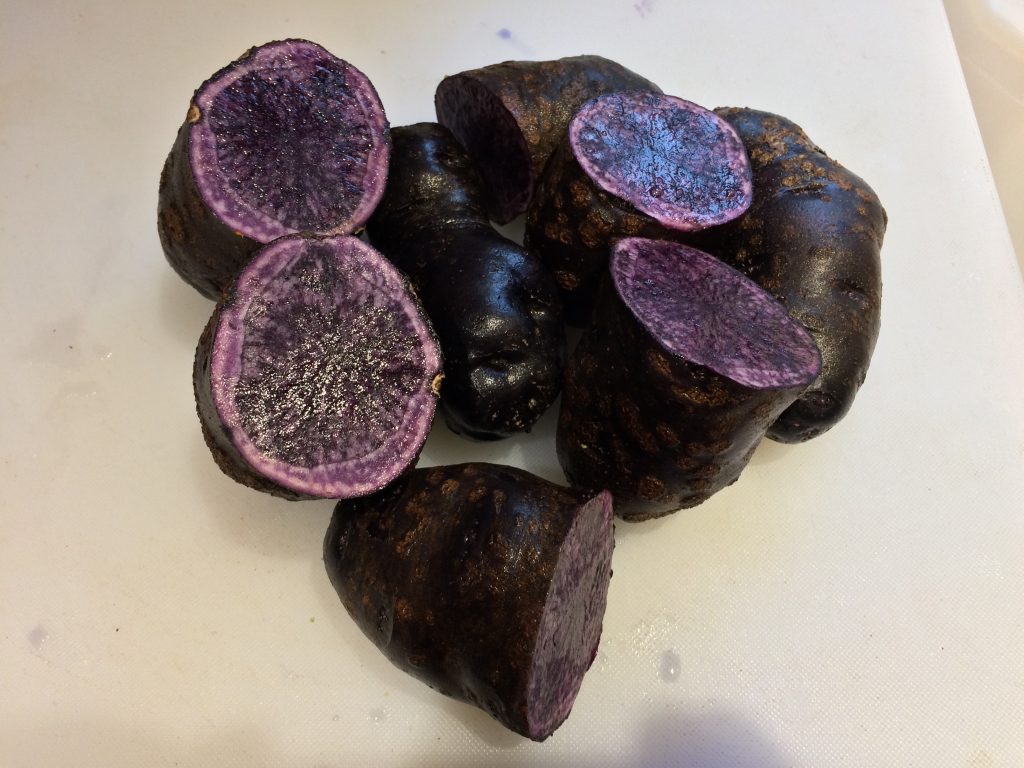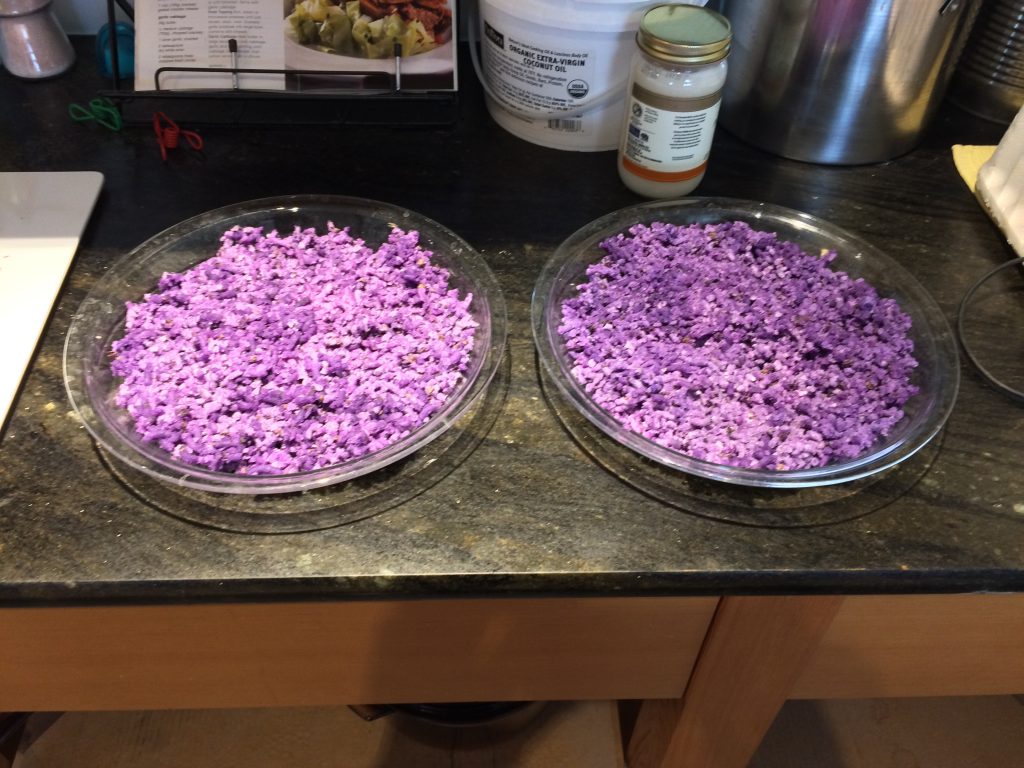
Gary’s note: The previous blog on purple lefse makes it clear that Canadian Chuck Hays dances to a different drummer than most lefse makers. I like that, and I really like how Chuck brings his individuality to lefse making with these eight “outside the box” tips he uses with this recipe:
3 cups potato
4 tablespoons olive oil
½ teaspoon salt
1 tablespoon sugar
¼ to 3/8 cup milk, depending on how dry potatoes are
1 ¼ cups flour, or as needed
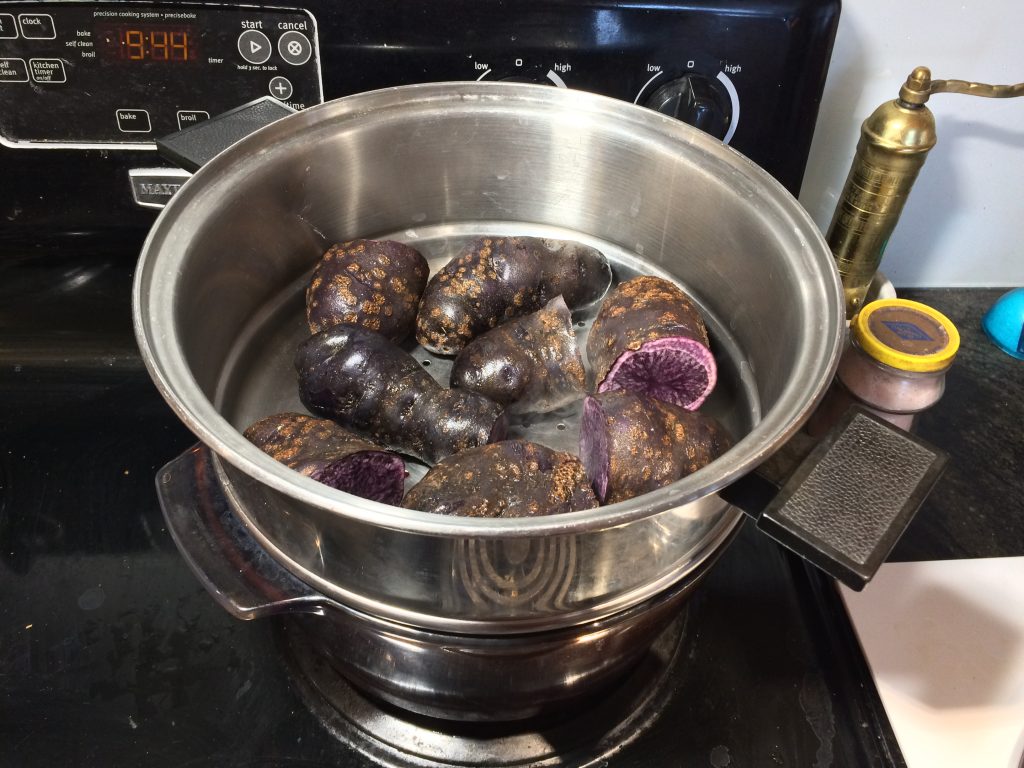
1. Steam the Vitelotte Noir potatoes whole in their jackets. Scrub them well and put them in a steamer pan over boiling water until they test done. This takes a little longer than boiling them, but they don’t soak up as much water. BTW, those five potatoes pictured above made enough ground spuds for 1 2/3 batches using my recipe. Consider the lefse from the extra 2/3 of a batch to be a bonus blessing from the Lefse Goddess.
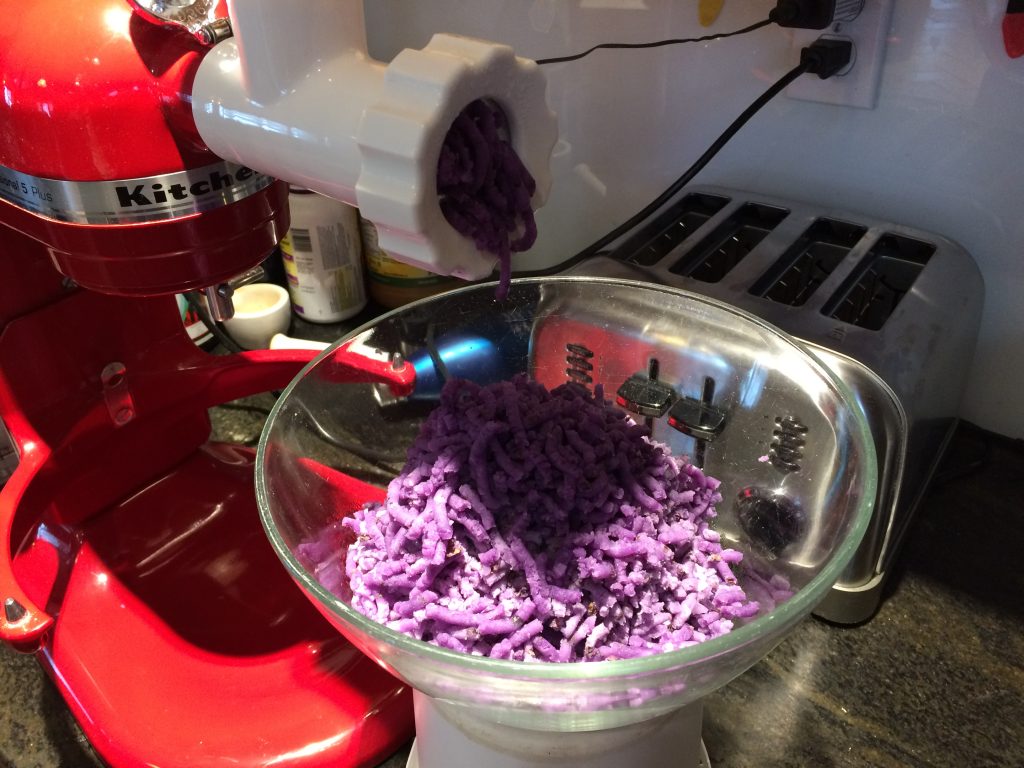
2. Don’t mash the unpeeled spuds; that can be an exercise in frustration. Run the hot potatoes through a meat grinder using a small plate (1/8-inch holes), jackets and all.
3. Cool — don’t chill — potatoes. I’ve lately joined the “No Chill” movement. Hey, with purple lefse I’m already going across the grain on tradition, so I might as well go all in. I’ve found cooling but not chilling potatoes makes good lefse and cuts down on the time commitment. Anything that makes me willing to make lefse more often is good.
4. Try olive oil. Doubters may ask about my recipe: “What part of Norway did that olive oil come from?” For many years I was a practicing vegetarian, vegan denomination. I respect that worldview, but I’m really an omnivore. Olive oil let me keep making lefse even when some of the ingredients were off-limits under the rules of the game. I’ve kept using olive oil because I like it, it adds a nice flavour, and the lefse is a little softer. BTW, I used to replace milk with soy milk. It wasn’t bad but definitely a compromise. I’m back to using milk, but it’s good to know soy milk works. Use it if it makes sense to you.

5. Don’t knead. Work the flour in with a pastry cutter. This keeps the dough softer, without allowing for the ultimate gluten development.
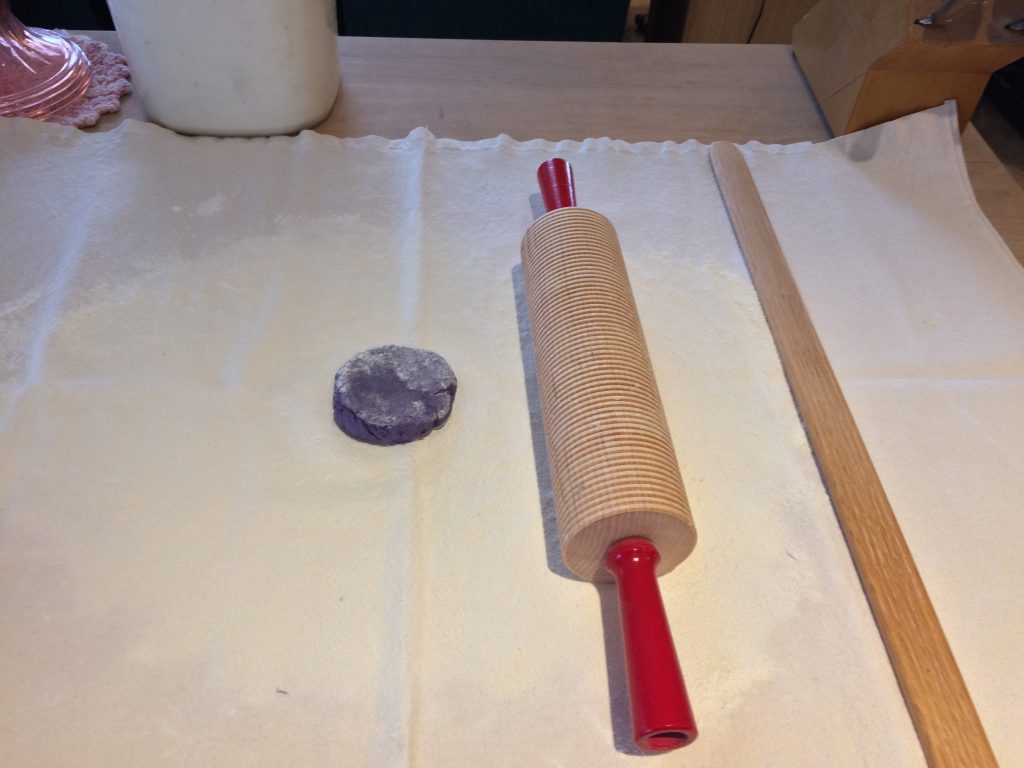
6. Don’t use a sock on the rolling pin. Occasionally, I get a piece of potato stuck in the pin, so I stop and pick it out. That’s how I roll. For one round, make a lump of cooled-not-chilled dough about the size of a tangerine, and roll it out on a board covered with a floured cloth. Turn the round two or three times.
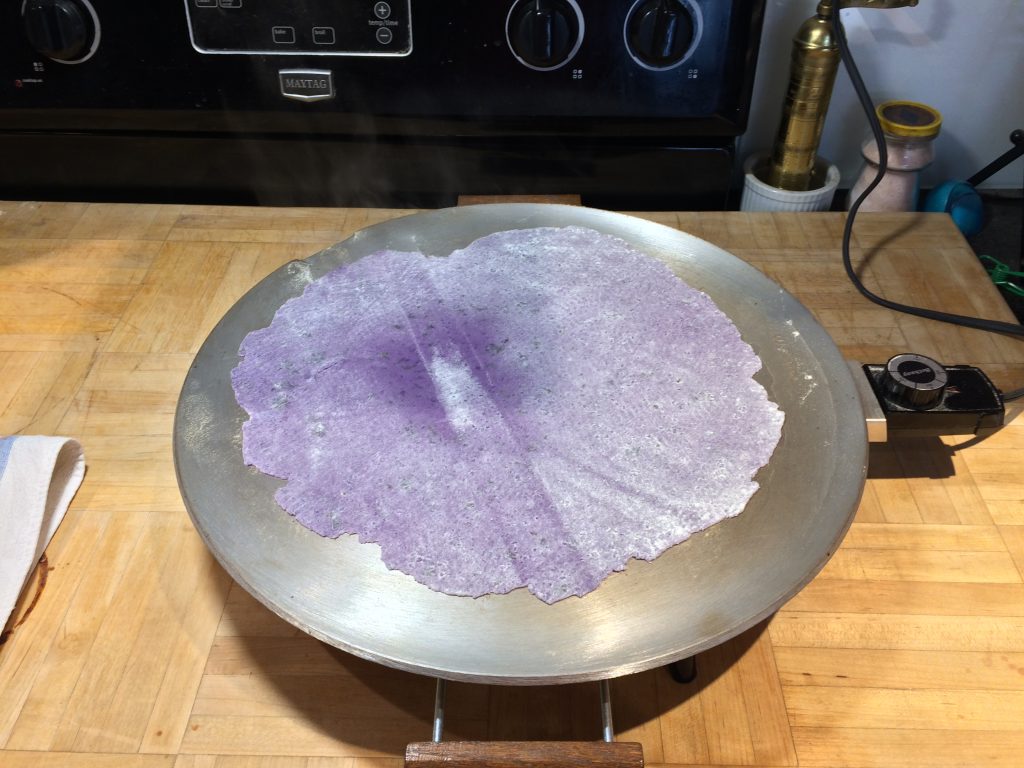
7. Use a heat reflector. I place an old piece of countertop on the stove under my griddle. I suspect that the wood keeps heat radiating from the 500F griddle from being conducted away by the metal stove. Because of this, the griddle stays hot without having to cycle the thermostat as much (or at least it seems so to me).
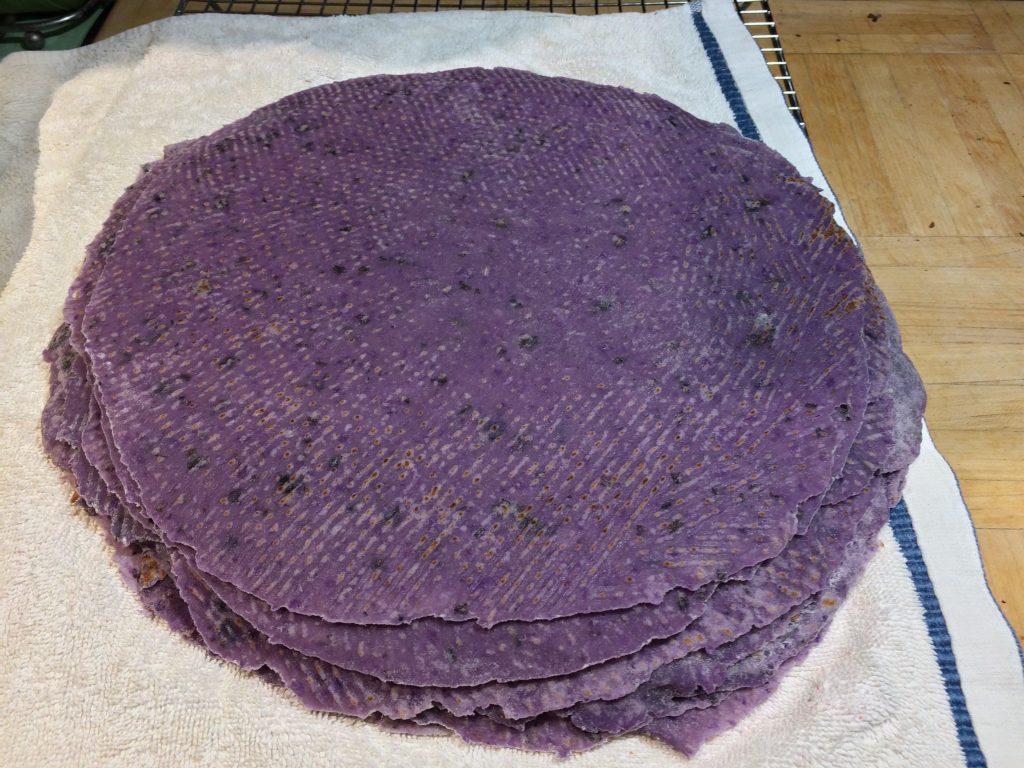
8. Stack your lefse rounds between towels and let the the rounds cool there before packaging. My recipe makes 8 to 10 rounds. That’s enough for two lefse lovers to have two rounds with supper, two with butter and sugar for dessert, and some rounds left for scrambled-egg-and-bacon lefse wraps for breakfast. And yeah, for the most part I’ve learned to make round lefse instead of lefse that looks like the shape of Alberta.
Praise for Purple Lefse
Before closing, I want to circle back to my lefse roots that I mentioned in my first blog. My mother eventually came around to making potato lefse about the time I graduated from high school. I was pretty much out of the house by then, so I didn’t have a “roll model.” I had to go through the “lefse jerky” stage and make lots of “lømpe” before I discovered The Last Word on Lefse and became a convert. Don and Judy Fearn of Rochester, Minnesota, have been remarkably patient with me, kindly coaching me to make lefse “from the inside out” and all the while letting me think I knew it all already.
Those of us who grew up around Scandinavians understand that praise can be a little muted. Sometimes it’s better that way, and sometimes the muted praise isn’t muted at all when you really listen and are able to translate correctly. One of my Norwegian friends rolled a round of my purple lefse with butter and sugar, shrugged, and took a bite. “Yah, y’know,” he said looking me in the eye, “it doesn’t taste purple.”
Pretty high praise!


